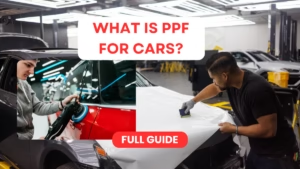DIY Car Maintenance: Essential Tasks You Can Do at Home | Save money on car maintenance with these easy DIY tips.
Table of Contents
ToggleIntroduction
Maintaining your car is essential to ensure its longevity and performance. While professional maintenance can be costly, there are several DIY tasks you can perform at home to save money and keep your vehicle in top condition.
Importance of DIY Car Maintenance
Taking care of your car yourself not only saves you money but also allows you to become more familiar with your vehicle’s inner workings. This knowledge can be empowering and help you troubleshoot issues more effectively.
Checking and Topping Up Fluids
Regularly checking and topping up essential fluids such as engine oil, coolant, transmission fluid, brake fluid, and windshield washer fluid is crucial for the proper functioning of your car. It’s a simple task that can prevent major issues down the road.
Changing Engine Oil
Changing your car’s engine oil is one of the most important maintenance tasks. Doing it yourself can save you a significant amount of money compared to taking it to a mechanic. Just make sure to use the correct type and grade of oil recommended for your vehicle.
Inspecting and Replacing Air Filters
Air filters prevent dust, dirt, and other debris from entering your car’s engine, ensuring optimal performance. Check your air filters regularly and replace them if they’re dirty or clogged to maintain fuel efficiency and engine power.
Checking and Rotating Tires
Proper tire maintenance is essential for safety and longevity. Regularly check tire pressure and tread depth, and rotate your tires every 5,000 to 7,000 miles to ensure even wear and extend their lifespan.
Replacing Wiper Blades
Clear visibility is crucial for safe driving, especially during inclement weather. If your wiper blades are streaking or not clearing the windshield effectively, it’s time for a replacement. Installing new wiper blades is a quick and inexpensive DIY task.
Benefits of DIY Car Maintenance
Cost Savings
Performing car maintenance tasks yourself can save you a significant amount of money on labor costs. With a few basic tools and some knowledge, you can tackle many maintenance tasks at home for a fraction of the price.
Convenience
Being able to perform maintenance tasks at home saves you time and hassle. You don’t have to schedule appointments or wait for your car to be serviced. Plus, you can work at your own pace and on your own schedule.
Learning Experience
DIY car maintenance allows you to learn more about your vehicle and how it works. It gives you a sense of accomplishment and empowers you to take better care of your car in the long run.
Essential DIY Car Maintenance Tasks
Checking and Topping Up Fluids
Regularly check fluid levels and top up as needed to ensure proper lubrication and cooling of your engine.
Changing Engine Oil
Change your car’s oil according to the manufacturer’s recommendations to keep your engine running smoothly.
Inspecting and Replacing Air Filters
Inspect air filters regularly and replace them if they’re dirty to maintain optimal engine performance.
Checking and Rotating Tires
Check tire pressure and tread depth regularly, and rotate tires to ensure even wear and prolong their lifespan.
Replacing Wiper Blades
Replace worn-out wiper blades to maintain clear visibility and safe driving in all weather conditions.
Conclusion
DIY car maintenance is not only cost-effective but also empowering. By performing essential tasks yourself, you can save money, learn valuable skills, and keep your vehicle running smoothly for years to come.
How do I maintain my car by myself?
Maintaining your car yourself involves regular inspections and basic tasks like checking and topping up fluids, inspecting tires, replacing air filters, and changing the oil and oil filter. It’s also important to follow the manufacturer’s recommended maintenance schedule outlined in the owner’s manual.
What is the most basic maintenance for a car?
The most basic maintenance for a car includes checking and topping up fluids such as engine oil, coolant, brake fluid, and windshield washer fluid. Regularly inspecting tires for proper inflation and tread wear is also essential.
How to service a car at home?
To service a car at home, you can follow a checklist of basic maintenance tasks such as changing the oil and oil filter, replacing air filters, inspecting and rotating tires, checking and topping up fluids, and inspecting the brakes.
मैं अपनी कार का रखरखाव खुद से कैसे करूं?
अपनी कार का रखरखाव खुद से करने के लिए आपको नियमित रूप से इंस्पेक्शन करने और इंसानियत और बुनाई करने जैसे मौलिक कामों को करना होगा। यह तब भी आवश्यक है जब तक आपको कार की लिस्ट के मुताबिक काम करने के लिए इंजिन की चेकिंग, तायरों की जांच, विभिन्न तरल चेक और ताजगी को बनाए रखने की आवश्यकता हो।
How many km car service?
Car servicing intervals typically vary depending on the manufacturer’s recommendations, but a general guideline is to service your car every 10,000 to 15,000 kilometers, or once a year, whichever comes first.
What is the most common car repair?
The most common car repair is often related to the braking system, followed by issues with the electrical system, such as battery replacement or alternator failure.
Which car is hard to maintain?
Luxury and exotic cars, as well as some European brands, can be harder and more expensive to maintain due to the cost of parts and specialized servicing requirements.
What is PMS in a car?
PMS stands for Preventive Maintenance Service. It includes regular maintenance tasks such as oil changes, filter replacements, fluid checks, and overall inspections to prevent potential issues and keep the car in good working condition.
Which car has highest maintenance?
Luxury brands like BMW, Mercedes-Benz, and Audi often have higher maintenance costs compared to other brands due to their complex engineering and expensive parts.
How can I clean my car at home daily?
To clean your car at home daily, you can use a mild car shampoo, microfiber towels, and a hose with a spray nozzle. Wash the exterior with soapy water, rinse thoroughly, and dry with a clean towel. Vacuum the interior, wipe down surfaces, and clean windows with a glass cleaner.
How to maintain a car in good condition?
To maintain a car in good condition, follow the manufacturer’s recommended maintenance schedule, keep fluids topped up, regularly inspect tires, wash and wax the exterior, and clean the interior regularly.
How do I maintain my first car?
Maintaining your first car involves regular inspections, following the maintenance schedule, and addressing any issues promptly. Learn basic maintenance tasks like checking fluids and tire pressure, and don’t ignore unusual sounds or warning lights.
How many km should I replace my car?
There isn’t a specific kilometer limit for replacing a car. Typically, people replace their cars every 8 to 12 years or when repair costs start outweighing the value of the vehicle.
How many kilometers does engine oil last?
Engine oil typically lasts between 5,000 to 10,000 kilometers, depending on the type of oil used and driving conditions. Synthetic oils generally have a longer lifespan compared to conventional oils.
Is it necessary to service a car after 10,000 km?
Yes, it’s generally recommended to service a car after 10,000 kilometers to ensure that essential maintenance tasks like oil changes and inspections are performed regularly.
Which car has highest life?
Cars from brands known for reliability, such as Toyota, Honda, and Subaru, often have longer lifespans if properly maintained. Additionally, diesel-powered cars tend to have longer lifespans compared to gasoline cars.
Which car brand is hardest to maintain?
Luxury brands like BMW, Mercedes-Benz, and Porsche are often considered the hardest to maintain due to higher parts and servicing costs.
What is the simplest car to maintain?
Generally, Japanese brands like Toyota, Honda, and Mazda are known for their reliability and ease of maintenance. Compact cars with simple engine designs and commonly available parts are also easier to maintain.
Why is it called casa?
CASA stands for “Condominiums, Apartments, and Single-family Attached homes.” It’s used in real estate to describe different types of residential properties.
What does PDI mean on a car?
PDI stands for “Pre-Delivery Inspection.” It’s a thorough check performed by the dealer or manufacturer on a new car before it’s delivered to the customer.
Is change oil included in PMS?
Yes, changing the oil is typically included in a Preventive Maintenance Service (PMS) along with other tasks like filter replacements, fluid checks, and overall inspections.
What is the hardest car part to fix?
The hardest car part to fix depends on the person’s skill level and the specific problem. However, some challenging components include the transmission, timing belt, and complex electrical systems.
What is the most damaged car?
The most damaged cars are typically those involved in severe accidents or those with neglected maintenance, resulting in issues like engine failure or extensive rust.
Which car brand is easiest to fix?
Brands with widespread availability of parts and straightforward designs are generally easier to fix. Japanese brands like Toyota and Honda often fall into this category.
What car has best quality?
Brands like Lexus, Toyota, and Porsche are often praised for their build quality, reliability, and customer satisfaction.
What is the cheapest car brand?
Brands like Kia, Hyundai, and Nissan often offer affordable options with good value for money.
What is the cheapest car brand to fix?
Brands like Toyota and Honda are known for their relatively low repair costs due to the availability of affordable parts and straightforward designs.
What is the most unsafe car?
Cars with poor crash test ratings and limited safety features are considered the most unsafe. However, these days, most cars meet stringent safety standards.
What cars have the worst quality?
Some brands that have faced quality issues in the past include Fiat, Chrysler, and Mitsubishi, but many of these have improved their quality in recent years.
Which car is most safe in an accident?
Cars with advanced safety features like autonomous emergency braking, lane-keeping assist, and adaptive cruise control, often found in brands like Volvo, Subaru, and Mercedes-Benz, tend to be among the safest in accidents.
Read More:
The Impact of Autonomous Cars on the Future of Transportation: Explore how self-driving technology is reshaping the automotive industry.
The Future of Electric Cars: What to Expect in the Next Decade | 10 Facts
The Benefits of Car Leasing: Is it Right for You? 5 Advantages of leasing a car versus buying. ( Best Guide)
Car Maintenance Myths Debunked | 6 Myths You should Know


The Complete Guide to Car Ownership in America: Everything You Need to Know in 2025






Finding The Best Car Delivery Services – 5 Different Use-Cases Discussed



Pros & Cons Of Choosing A Mystery Car From A Rental Service

Why Does My Car Smell Like Gas? | Know the Reason and Solution







6 thoughts on “DIY Car Maintenance: Essential Tasks You Can Do at Home”